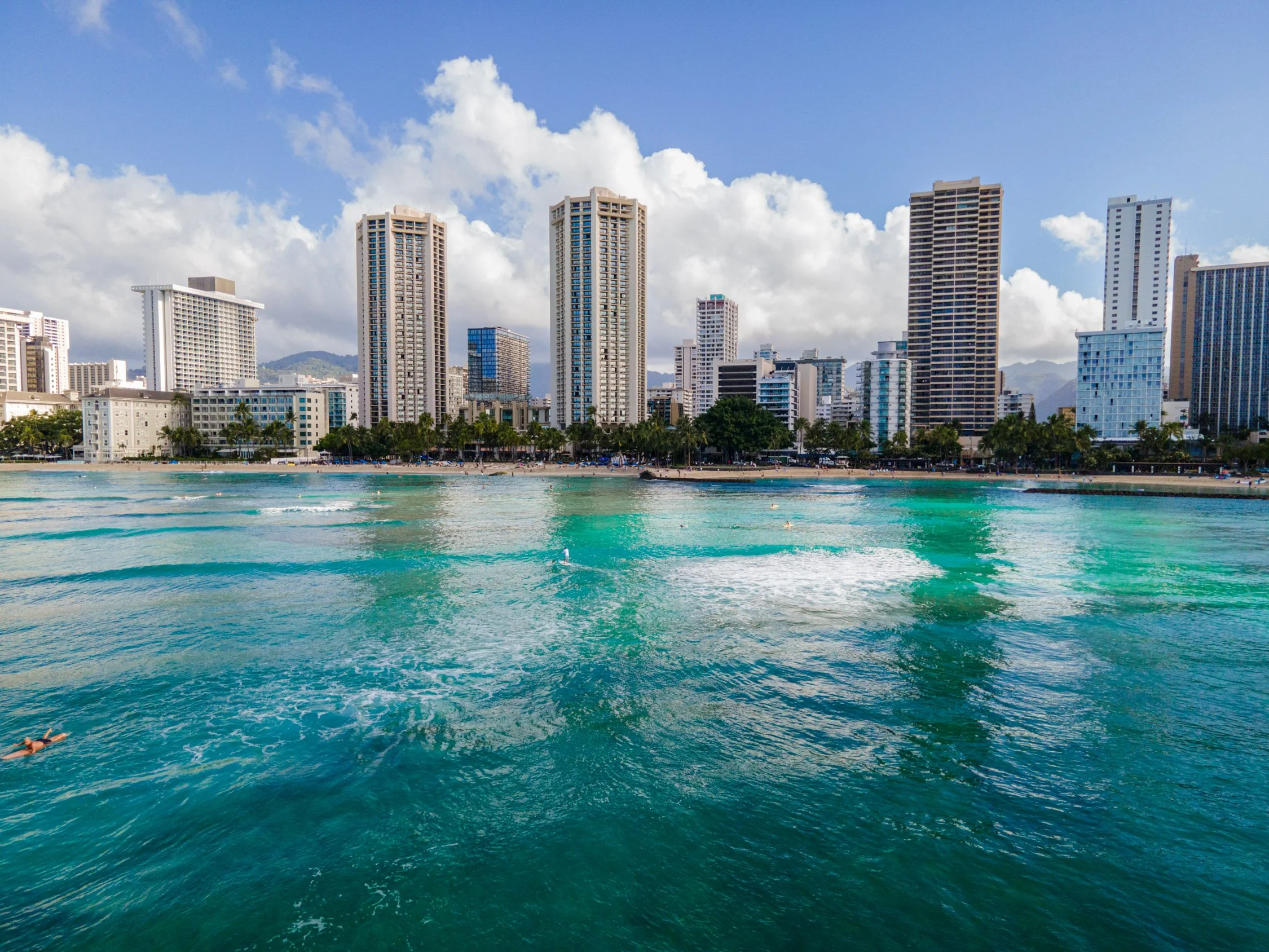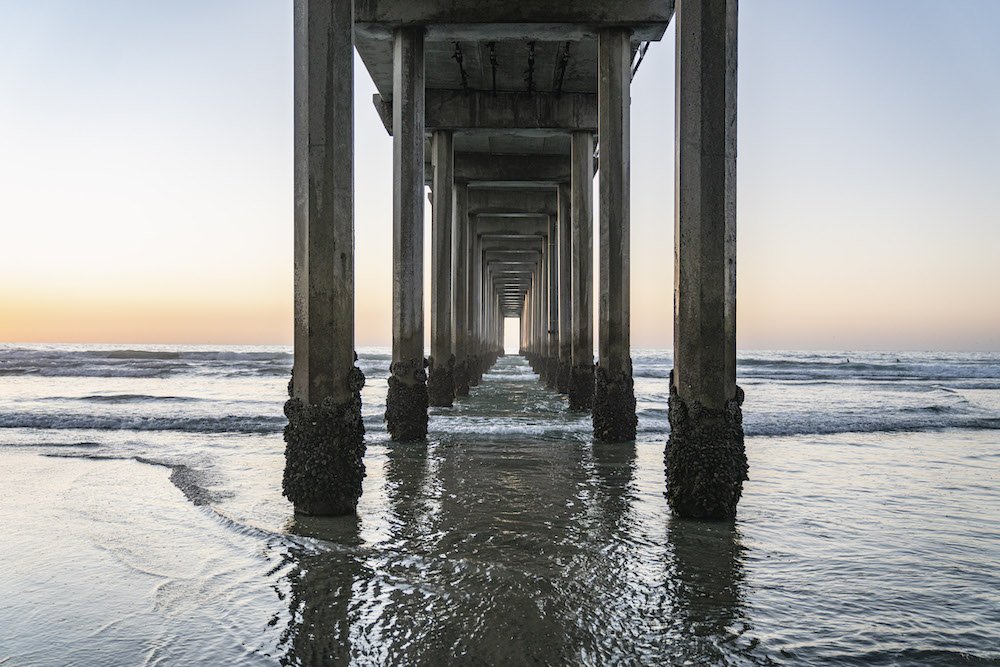Plan Your First Surf Trip to Hawaii
Hawaii, with its idyllic beaches, warm waters, and consistent waves, has always been a surfer's paradise. For surfers around the world, the mere thought of planning a surf trip to the Hawaiian Islands is enough to set their hearts racing. Hawaii is not just a destination; it's a dream come true. Whether you're a seasoned pro or a novice in the water, this article will guide you through the essential steps to ensure that your surf trip to Hawaii is nothing short of epic.
A casual day at Waikiki, HI. Photo by Dalton Johnson
1. Choose the Right Island:
Hawaii is an archipelago of eight major islands, each with its unique character and surf spots. The four most popular islands for surfing are Oahu, Maui, Kauai, and the Big Island (Hawaii). The choice of the island plays a pivotal role in the success of your surf trip.
Oahu: Oahu is often considered the heart of the surfing world, known for its bustling surf towns like Waikiki. Oahu is home to world-famous spots such as Pipeline and Sunset Beach, making it a mecca for surfers. However, these North Shore breaks are reserved for expert surfers who can handle the powerful, barreling waves.
Maui: For a more relaxed vibe and a diverse range of surf breaks, Maui's North Shore is an excellent choice. Maui offers opportunities for surfers of all skill levels, from beginners to advanced. Ho'okipa Beach Park is famous for its windsurfing and kitesurfing, while Honolua Bay offers long rides and a peaceful atmosphere.
Kauai: Kauai, also known as the "Garden Isle," provides a more pristine and less crowded surfing experience. Hanalei Bay is a great spot for beginner and intermediate surfers, while advanced riders can challenge themselves at breaks like Kalihiwai and North Shore Reef.
The Big Island (Hawaii): The Big Island offers a diverse range of surf breaks and an overall more relaxed atmosphere. Honolii Beach Park on the Hilo side is perfect for longboarders and beginners. The west side of the island offers more challenging waves for advanced surfers.
To make an informed choice, research each island's surf conditions, vibe, and culture to see which one aligns best with your preferences.
2. Timing is Everything:
The timing of your surf trip to Hawaii is crucial because the waves vary greatly throughout the year. The best time to go largely depends on the type of waves you want to ride.
Winter (November to February): Hawaii's North Shore, particularly Oahu, is famous for its massive winter swells. If you're an advanced surfer and dream of tackling powerful, barreling waves, this is the season to visit. The Vans Triple Crown of Surfing takes place during this time, featuring some of the most prestigious surf competitions in the world.
Summer (May to September): For smaller, more manageable waves, consider visiting during the summer months. The South Shore and other spots come to life, offering a more suitable environment for beginner and intermediate surfers. While the waves are less colossal, they still provide ample opportunities for fun and progression.
3. Surf Skill Level:
Your level of experience and expertise in surfing will greatly influence your choice of surf destination in Hawaii. Each island has waves suitable for various skill levels.
Oahu's North Shore: This is the mecca for expert surfers. World-famous spots like Pipeline and Sunset Beach offer some of the most challenging waves on the planet. If you're not a seasoned pro, it's best to watch in awe and respect from the shore.
South Shore of Oahu: If you're a beginner or intermediate surfer, the South Shore of Oahu is your haven. Waikiki Beach, in particular, offers gentle, rolling waves that are perfect for learning and practicing your skills.
Other Islands: Each of the Hawaiian Islands has surf breaks catering to surfers of all levels. Be sure to do your research and choose a spot that aligns with your skill level and comfort.
4. Accommodations:
Hawaii offers a diverse range of accommodations to suit all budgets and preferences. Whether you're looking for a luxury resort, a budget-friendly hostel, or a cozy vacation rental, you'll find it in Hawaii. It's advisable to book your accommodations in advance, especially during peak surf seasons when demand is high.
Luxury Resorts: Hawaii boasts a plethora of world-class resorts, offering not only luxurious accommodations but also convenient access to surf spots. Oahu's Turtle Bay Resort, for instance, provides easy access to the North Shore's legendary waves.
Vacation Rentals: Many travelers opt for vacation rentals, which can be a more economical and personalized option. These range from beachfront cottages to charming condos, providing you with a home away from home.
Budget-Friendly Options: If you're on a tight budget, consider hostels or budget hotels. While you may sacrifice some luxuries, you'll still be in close proximity to the ocean and waves.
5. Surfboard and Gear:
Now, let's talk surfboards and gear. Your decision here depends on your personal preferences, your level of commitment to the sport, and the practicality of traveling with surf gear.
Renting Surfboards: Many surf shops in Hawaii offer rental boards and other surf gear. Renting can be a convenient option, particularly if you're flying in from a long distance, as it saves you the hassle and expense of transporting your board. Plus, it allows you to try different boards suited to the local conditions.
Bringing Your Own Board: If you're accustomed to your own board and are planning an extended stay, bringing your own surfboard may be the way to go. Just be aware of the additional travel costs and ensure your board is well-protected during transit.
6. Explore Beyond Surfing:
While surfing is the main attraction, Hawaii offers a wide range of activities and attractions that are worth exploring.
Hiking: Hawaii is known for its stunning hiking trails. Whether it's the Napali Coast Trail in Kauai, the Pipiwai Trail in Maui, or the Diamond Head Crater Hike on Oahu, the islands offer incredible natural beauty and awe-inspiring vistas.
Snorkeling and Diving: Hawaii's crystal-clear waters provide excellent opportunities for snorkeling and diving. Explore vibrant coral reefs, swim alongside sea turtles, and discover the marine wonders of the islands.
Traditional Luaus: Immerse yourself in Hawaiian culture by attending a traditional luau. Enjoy delicious local cuisine, hula dancing, and the spirit of aloha.
Exploring Local Culture: Each island has its own unique culture and history, from the Polynesian heritage to the fusion of traditions from various immigrant groups. Take the time to learn about the local culture and interact with the warm and welcoming Hawaiian people.
Nose riding on at one of the many Waikiki breaks in Hawaii. Photo by Dalton Johnson
A surf trip to Hawaii is a dream come true for many, and by following these steps, you can turn that dream into a reality. The key is to choose the right island, time your trip correctly, consider your skill level, book accommodations in advance, decide on your surf gear options, and explore the incredible attractions that go beyond the waves. Whether you're a seasoned pro seeking the thrill of massive winter swells or a beginner looking









